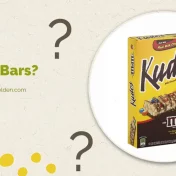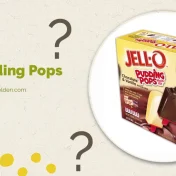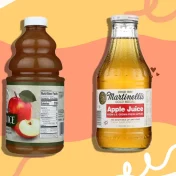The 1990s was a time of transformation and nostalgia. From the vibrant pop culture to the birth of iconic brands, this decade left an indelible mark on history.
Among the myriad of products that saw their inception during this period, one beverage stood out, both in taste and cultural significance – Fruitopia.
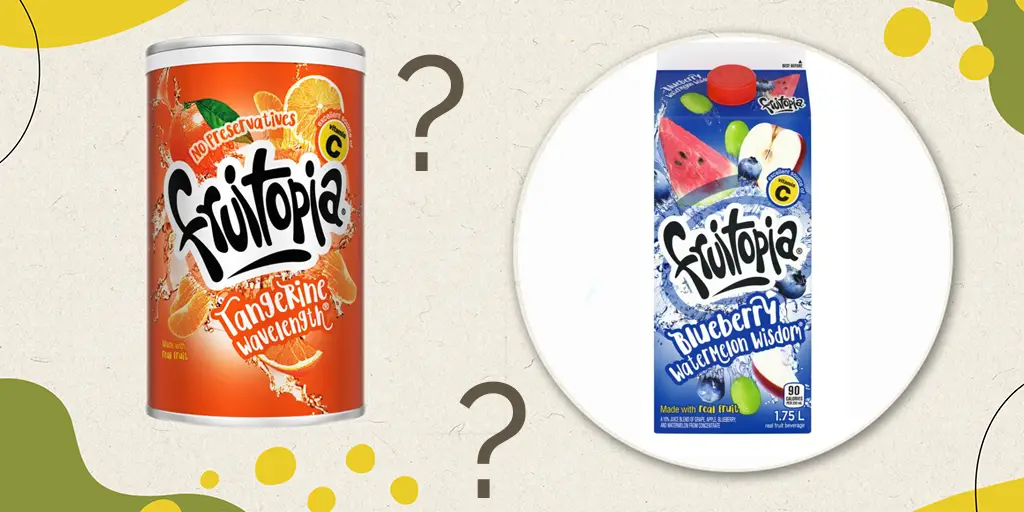
Introduced as a refreshing alternative to the sodas that dominated the market, Fruitopia was more than just a drink; it was a symbol.
It represented a generation that was seeking something different, something more aligned with their evolving tastes and sensibilities. With its unique flavors and bold marketing, Fruitopia became an emblem of the 90s beverage scene.
In this article, we’ll journey through the vibrant history of Fruitopia, understanding its rise to popularity, the genius marketing strategies behind its success, and the eventual factors that led to its decline.
Whether you’re a 90s kid who has fond memories of sipping on this delightful drink or someone curious about beverage industry trends, this piece promises a flavorful trip down memory lane.
History of Fruitopia
1994 was a pivotal year in the beverage industry. Amidst the cacophony of colas and the growing clamor for healthier drink options, Coca-Cola introduced a product that would soon capture the imagination of millions – Fruitopia.
The Birth of a New Beverage
Originating under the Minute Maid banner, Fruitopia wasn’t just another product in Coca-Cola’s extensive lineup. It was a statement.
At a time when the health food craze was starting to gain traction and the hippie culture of the past was seeing a revival, Fruitopia was perfectly poised to cater to this new audience.
The beverage was designed to be more than just a thirst quencher. It was an experience, a fusion of flavors that resonated with the ethos of the 1990s.
The name itself, “Fruitopia,” evoked images of a utopian world, abundant with the freshest of fruits and the promise of natural goodness.
Riding the Waves of the 90s
The 1990s were characterized by a unique blend of retrospection and forward-thinking. Events like the 25th anniversary of Woodstock celebrated the past, while the burgeoning health movement looked towards a better future. Fruitopia tapped into both these sentiments.
It’s essential to understand that while Fruitopia was a product of the 90s, its roots traced back to the ideals of the 60s and 70s. The beverage, in many ways, was a bridge between two eras, capturing the essence of both.
As we sip on this drink, figuratively speaking, let’s delve deeper into how Fruitopia’s brand image was crafted and how it managed to stand out in a crowded market.
Marketing and Brand Image
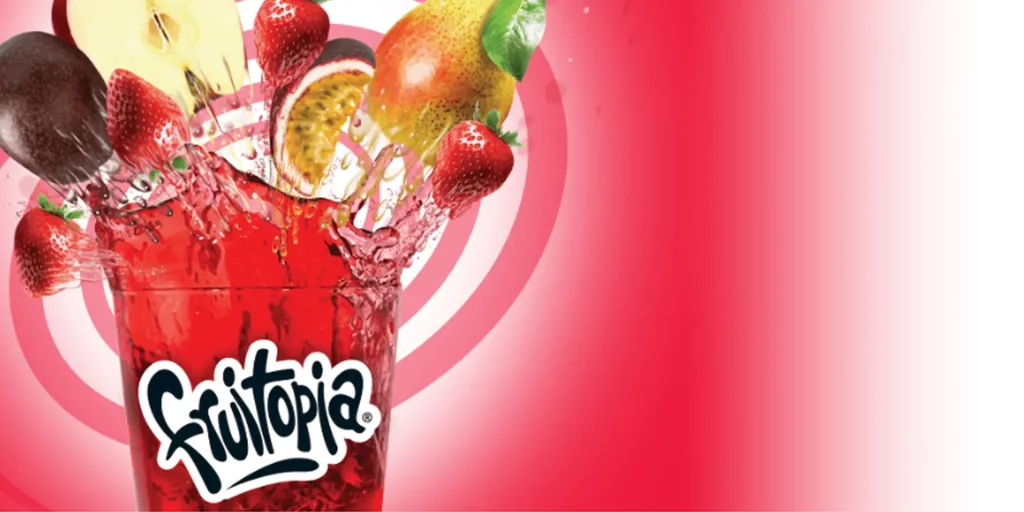
In a world dominated by sodas and traditional juices, Fruitopia had to carve a niche for itself. The way it was marketed played a crucial role in setting it apart from the competition.
A Different Kind of Drink
From the outset, Fruitopia was positioned not just as another beverage but as a lifestyle choice. In stark contrast to the colas of the time, it was presented as a healthier, more conscious drink choice.
The emphasis was not just on taste but on the overall experience – an experience that catered to both the mind and the body.
Tapping into Spirituality and Consciousness
In a move that was both bold and ingenious, Fruitopia’s branding was deeply rooted in themes of spirituality and consciousness.
Coca-Cola, aware that their primary brand might not resonate with these themes, chose to release Fruitopia under their Minute Maid division.
This decision allowed the drink to have its own distinct identity, one that was in tune with the rising esoteric and health-conscious ideals of the time.
The Iconic Advertising Campaign
Fruitopia’s advertising was nothing short of revolutionary. The commercials were a visual and auditory treat, characterized by trippy, kaleidoscopic visuals and ethereal, New Age music.
Renowned artists like Kate Bush and The Cocteau Twins lent their tunes, adding an air of mystique to the brand.
But what truly set these commercials apart were the messages they conveyed. Phrases like “Apples and pineapples don’t fight in fruit integration.
People could learn a lot from fruit” weren’t just catchy; they were thought-provoking. Through such messages, Fruitopia wasn’t just selling a drink; it was promoting a philosophy.
Comparing with the Competition
While Fruitopia was making waves with its unique branding, it wasn’t the only player in the field. Brands like Snapple were also vying for the same audience.
However, while Snapple’s tagline was “made from the best stuff on Earth,” Fruitopia went a step further, positioning itself as a drink “for the mind, body, and planet.”
Popularity and Decline

The vibrant colors, the catchy tunes, and the promise of a holistic experience quickly catapulted Fruitopia to fame. However, as with many products, its journey was marked by soaring highs and challenging lows.
An Instant Hit
Upon its release, Fruitopia became an instant sensation. Its unique blend of flavors, combined with its compelling marketing, made it a favorite among the youth.
Establishments like McDonald’s recognized its potential, making it a staple in their drink fountains. From school cafeterias to music festivals, Fruitopia was everywhere.
The Factors Behind Its Success
Several factors contributed to Fruitopia’s meteoric rise:
- Innovative Branding: As discussed, its branding was unlike anything seen in the beverage industry. It was fresh, relatable, and resonated with the times.
- Diverse Flavor Profiles: Fruitopia wasn’t just about conventional flavors. It introduced a plethora of unique combinations, tantalizing the taste buds of its consumers.
- Strategic Partnerships: Collaborating with establishments like McDonald’s gave Fruitopia an edge, ensuring it reached a wider audience.
The Inevitable Decline
However, as the years rolled by, Fruitopia faced challenges. The very factors that led to its success became potential pitfalls:
- Changing Consumer Preferences: As the 2000s dawned, consumers became even more health-conscious. The sugar content in Fruitopia became a concern, and many started looking for even healthier alternatives.
- Intense Competition: Other brands started to catch up, introducing their line of fruit drinks with similar health and spiritual claims. The market became saturated.
- Evolution of Branding: The unique branding of Fruitopia, which was its strength, started to feel dated as newer, more modern branding strategies emerged.
While Fruitopia saw a decline in the U.S., it continued to have a presence in other markets, most notably in Canada. Its journey in the U.S. serves as a lesson in how even the most popular brands need to continuously evolve to stay relevant.
Legacy and Current State
While its heyday in the U.S. might have been in the 1990s, the legacy of Fruitopia continues to live on. The brand, with its unique flavors and iconic marketing campaigns, left an indelible mark on the beverage industry.
Nostalgia and Cultural Impact
For many, Fruitopia is not just a drink; it’s a trip down memory lane. It evokes memories of summer days, music festivals, and simpler times. The brand has become synonymous with the 90s, representing the ethos and spirit of the decade.
Fruitopia Today
While it may have faded from U.S. store shelves, Fruitopia is still very much alive in other parts of the world:
- Canada: Fruitopia continues to be a popular choice among Canadians. In fact, several flavors are available exclusively in Canada, making it a sought-after drink for Fruitopia enthusiasts from the U.S.
- Online Retail: Thanks to the internet, nostalgic fans can still get their hands on Fruitopia. Platforms like Amazon offer the drink, albeit at premium prices, sourced from markets where it’s still available.
The Movement to Bring Fruitopia Back
The love for Fruitopia is evident in the numerous online petitions and fan groups advocating for its return to the U.S. market.
These passionate fans reminisce about their favorite flavors and share stories of their Fruitopia experiences. Their dedication is a testament to the brand’s lasting impact.
While the future of Fruitopia in the U.S. remains uncertain, its legacy is undeniable. Whether it makes a comeback or remains a cherished memory, Fruitopia will always be remembered as a beverage that captured the heart and spirit of a generation.
You May Also Enjoy Reading:
Conclusion
The story of Fruitopia is a captivating tale of innovation, brilliant marketing, and the ever-evolving tastes of consumers.
From its inception in the 1990s to its current status, the journey of this beverage serves as a case study in the cyclical nature of product popularity.
A Reflection of the Times
Fruitopia was more than just a product; it was a reflection of its era. The 1990s were a time of change, exploration, and a search for meaning.
Fruitopia, with its vibrant flavors and deep-rooted themes of spirituality and consciousness, perfectly captured the zeitgeist of the decade.
Lessons from Fruitopia
The rise and fall of Fruitopia offer several lessons for brands and marketers:
- Stay Adaptable: Consumer preferences are constantly changing. What’s popular today might not be tomorrow. Brands must remain adaptable, ready to evolve with the times.
- Deeply Understand Your Audience: Fruitopia’s initial success was largely due to its deep understanding of its target audience. It knew what the consumers wanted and delivered it brilliantly.
- Innovation is Key: While staying true to one’s roots is essential, brands must also innovate to stay relevant. Fruitopia’s inability to adapt to the changing landscape was a significant factor in its decline.
A Lasting Legacy
Regardless of its commercial status today, Fruitopia’s legacy is secure. It will always be remembered as a brand that dared to be different, that resonated with a generation, and that brought joy to many with its unique flavors and memorable marketing campaigns.

